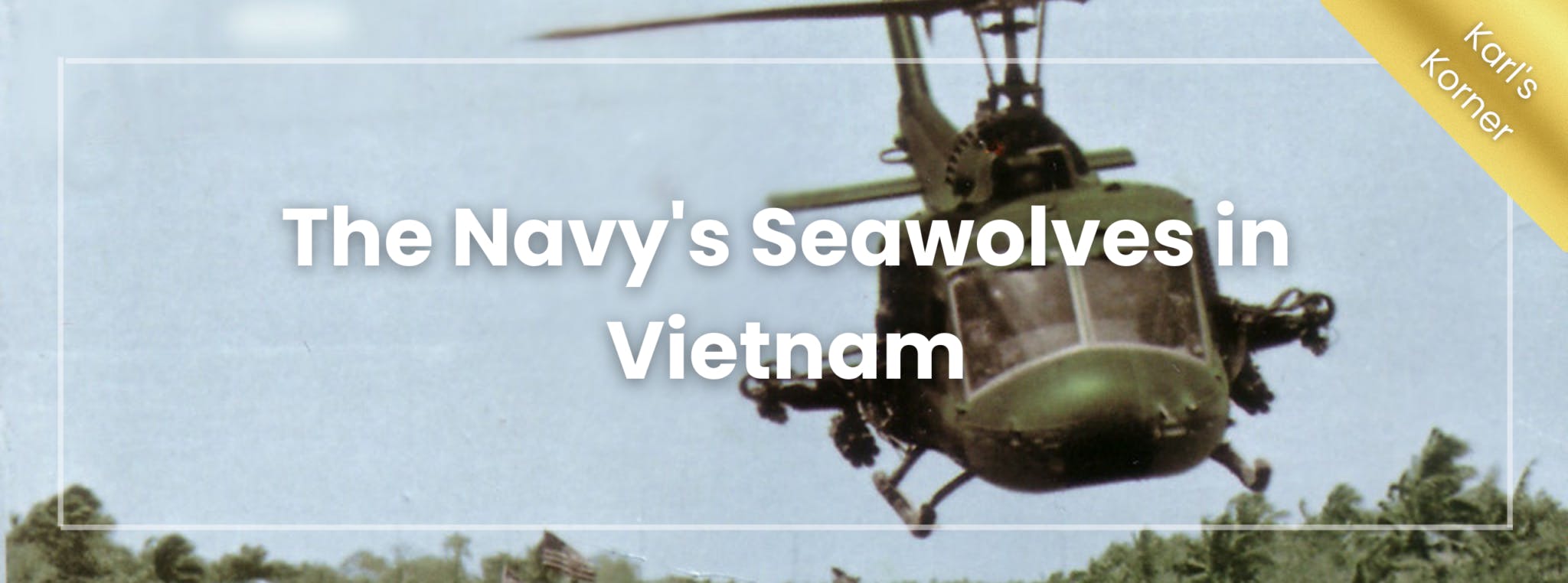 April 17, 2023 | Karl’s Korner
April 17, 2023 | Karl’s KornerThe Navy’s Seawolves in Vietnam
The Vietnam War involved fighting communist forces that infiltrated neutral Laos and Cambodia and were sustained by a stream of supplies from North Vietnam transported down the Ho Chi Minh Trail. The Mekong River complex was a critical highway for insurgent troops and supplies. In this scenario, the Navy deployed the Seawolves, a helicopter attack squadron, to improve air support efficacy.
The Need for Efficient Air Support
As efforts to disrupt communist operations in the Mekong intensified, small boats operating upriver discovered that on-call close air support was vital. Initially, Army helicopter gunships provided air support along the river, but there remained an element of inefficiency due to the difference in operating methods and terminology. In 1967, the entire U.S. 9th Infantry Division was committed to the region to counter the insurgency in the delta, requiring more reliance on air support for the riverine units. The inefficiencies in Army helicopter and naval boat cooperation only intensified.
Formation of the Seawolves
To improve air support efficacy, the Navy deployed naval flight crews in former Army UH-1 Huey helicopter gunships. After several months of combat, the concept was validated, and an even more comprehensive range of helicopter support missions was demanded. Therefore, the call went out to volunteer naval helicopter crews to fly various missions and form a new gunship squadron. In April 1967, Helicopter Attack Squadron (Light) Three (HAL-3) was activated with the mission of flying combat sorties in direct support of the combined naval and military operations along the river.
The Seawolves in Action
The Seawolves, organized as a quick reaction force, stood 24-hour shifts on their Navy ship, ready to respond immediately to assistance calls within a fifty-mile radius. They flew combat sorties in their Huey gunships, performing a variety of missions ranging from close-air support and tactical reconnaissance to medical evacuations and special forces team insertions. The Seawolf helicopters were amply armed with pilot-fired machine guns and rockets, as well as a door gunner.
In 1968, the communist Tet Offensive raged across South Vietnam, including the Mekong Delta. Although the combat was more extensive, HAL-3 only lost one helicopter crew that July. Over the next couple of years, operations were extended into neighboring Cambodia as a prelude to the “Vietnamization” of defense responsibilities in the delta region.
The Legacy of the Seawolves
Although U.S. strategists emphasized transferring more combat responsibility to the South Vietnamese forces, HAL-3 remained in-country responding to support calls into the spring of 1972. When the last squadron detachment stood down in March 1972, the Seawolves had flown some 120,000 sorties while sustaining 44 fatalities. The employment of naval helicopters in combat supporting naval boat crews was certainly validated, and HAL-3 remains the only dedicated attack helicopter squadron in U.S. naval history.
The Seawolves were a vital component of the U.S. effort in Vietnam, providing critical air support to combat communist forces. Their success validated the concept of deploying naval helicopter crews in former Army UH-1 Huey helicopter gunships. The Seawolves remain a legendary part of U.S. naval history.
Launch em’… until next time,
Karl
Your Adventure Starts Now
Your email is the key to information that will open up all your possibilities for exploring the mighty Midway!

